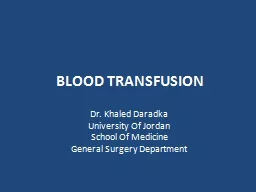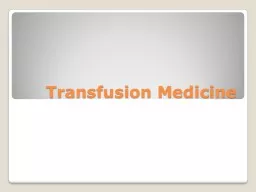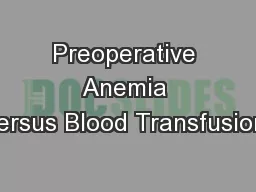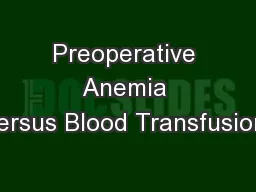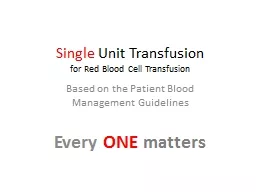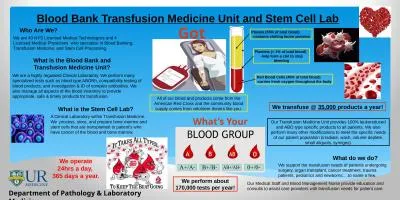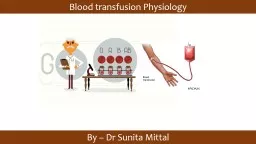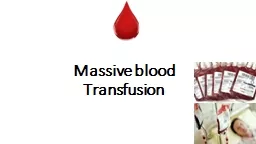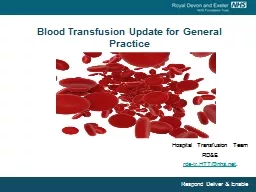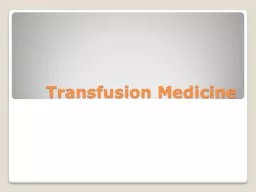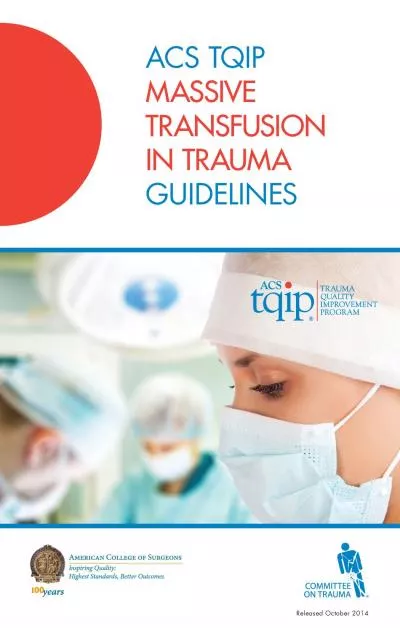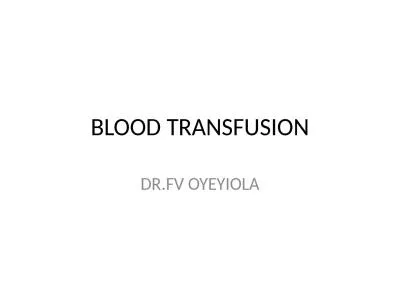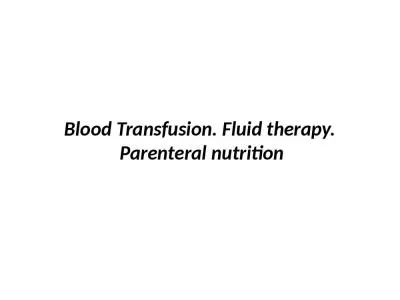PPT-BLOOD TRANSFUSION Dr. Khaled
Author : bitsy | Published Date : 2022-02-24
Daradka University Of Jordan School Of Medicine General S urgery Department A Transfusion Dilemma A 72 year old woman presents to ER with a nosebleed This is
Presentation Embed Code
Download Presentation
Download Presentation The PPT/PDF document "BLOOD TRANSFUSION Dr. Khaled" is the property of its rightful owner. Permission is granted to download and print the materials on this website for personal, non-commercial use only, and to display it on your personal computer provided you do not modify the materials and that you retain all copyright notices contained in the materials. By downloading content from our website, you accept the terms of this agreement.
BLOOD TRANSFUSION Dr. Khaled: Transcript
Download Rules Of Document
"BLOOD TRANSFUSION Dr. Khaled"The content belongs to its owner. You may download and print it for personal use, without modification, and keep all copyright notices. By downloading, you agree to these terms.
Related Documents

